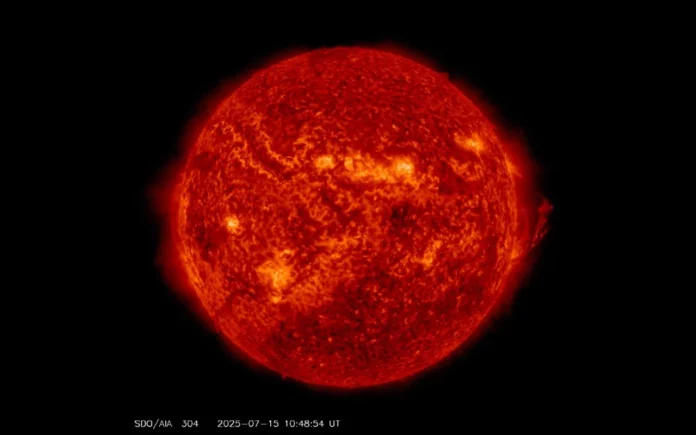On July 15, a solar filament erupted from the upper left side of the Sun, releasing a powerful explosion of plasma and magnetic fields into space. The explosion was so powerful that it left a deep fiery scar of hot plasma and debris on the star’s visible surface.
While filamentary eruptions are not uncommon, astronomers had already observed an unusually large filament – a cold, dense ribbon of gas suspended above the Sun‘s surface – that they spotted a few days before the explosion. When the filament inevitably collapsed, they kept the Solar Dynamics Observatory on standby to record the strong plasma pulsations caused by small instabilities in the Sun’s magnetic field.
The resulting explosion created a giant “fire canyon” more than 250,000 miles (400,000 kilometers) long and at least 12,400 miles (20,000 kilometers) high, said Tony Phillips, an astronomer who runs Spaceweather.com, a website that tracks solar activity and other space weather phenomena. “A grand canyon indeed,” he wrote in a short post about the event.
One practical reason astronomers are watching the filaments is that eruptions can sometimes trigger coronal mass ejections (CMEs), or intense bursts of plasma and magnetic fields. When CMEs reach Earth, they can cause geomagnetic storms that affect power grids and network systems. For astronauts in space, these storms can cause dangerously high levels of radiation, which can affect their health.
Fortunately, follow-up observations by the Solar and Heliospheric Observatory and the National Oceanic and Atmospheric Administration confirmed that this CME appears to be moving away from Earth. How long the filament scar will remain on the Sun remains to be seen.









